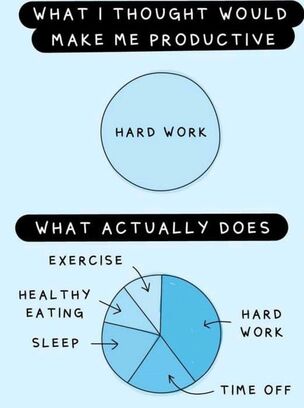I have huge compassion for really good managers who take over the leadership of a team from a “manager from hell”. You know the person I mean – he is aggressive and rude; he gets off on humiliating people; he uses threats to get what he wants; he uses gaslighting to manipulate people; and he has left behind him a team that is anxious and has gotten into the habit of making fear-based decisions. So now this chapter is behind them – thank goodness! And a new manager, with great people skills, has been brought in to rebuild the team and turn things around.
It is enormously frustrating when you are a leader who has a genuine open door policy, who genuinely wants people to make decisions, and who genuinely wants people to take the initiative, to receive feedback that his or her people are not doing these things because they still fear the consequences.
Fear is an insidious thing. It is easy to instil and difficult to dispel. It is just not enough for a leader to be an all-round good person. It is just not enough for a leader to know that he or she did not create the fear. The challenge to the new leader is to deliberately create an environment in which fear becomes a thing of the past, everyone has gotten over it and people are taking decisions and risks that are appropriate to their level of responsibility and authority.
I had a client who was battling with the residue of fear that was created more than four years ago – and people were still behaving as though the cause of the fear were present! It was as though fear had been woven into the very fabric of the business. The challenge to the current leadership was to create something different, and this cannot be done through good intentions alone.
So what would it take?
1. The entire team needs to be on board. Let’s assume that you lead the management team of a business – they all need to be committed to creating a high-performance, empowering, fear-free environment. The best way to do this is to workshop the following:
a. What is the current truth about the climate in this team/business? Get into detail. Drag all the dirty laundry out into the open. Name the elephants in the living room. Also identify what is good about the current truth because you don’t want to lose that.
b. How do we want things to be? Describe the climate, the relationships, how people will work, how people will make decisions, how people will innovate and initiate change.
c. What is creating the gap between the current truth and how we want things to be?
d. What do we (as leaders) need to change or do differently in order to realise our desired situation?
e. How (and how often) will we review our progress?
If you are the manager of a team of non-managers, the same process applies – the team is reaching agreement on how we will do things around here, and you are receiving input on how your team would like to be managed in order to bring out their best.
2. Ensure that your plan of action (d above) addresses the following:
- How will we clarify the parameters within which people at each level should be making decisions? What decisions should be made at what levels?
- How will we develop the decision-making skills of team members? Will we provide training? Coaching? Some combination of the two?
- How will we handle it if a team member takes the initiative or takes a decision and it is a mistake? How will we resolve the mistake? How will we support the team member? How will we make it safe for the team member to make decisions/take the initiative in future even though a mistake has been made on this occasion?
- How will we create the habit of having learning conversations in which we review our performance? The After Action Review (AAR) is a useful format:
- What did we set out to do/achieve?
- What actually happened?
- What worked well?
- What didn’t work well?
- What have we learned?
- What will we do/change going forward/in future?
It is helpful if you make one of your own gaffs the subject of the first AAR as it demonstrates to the team that you are fallible and that you are not afraid to hold your own actions up to scrutiny. This will show the team that if you are not afraid there is no reason for them to be afraid.
- When team members bring a decision to a manager, how will that manager coach the team member so that, ultimately, the team member makes the decision and learns in the process?
- How will we give recognition to people when they take the initiative or decisions that they were previously reluctant to take? Will we acknowledge this publicly? Will we send an email acknowledging it? Will we make a point of going to their desk to acknowledge them?
- How will we handle it when a manager is taking decisions that should be taken at the level below him/her? Will we remind him to push the decision back down? Will we hold her accountable for empowering her team members?
- Take every opportunity to demonstrate that you are as good as your word:
- Ensure that your responses are controlled and supportive when people mess up – and they will.
- Don’t be afraid to hold your own mistakes up to scrutiny – it makes it safer for everyone else to do so.
- Defend your team from outside criticism.
- Share praise with your team and celebrate success.
- Make your workplace a fun place to be. Make laughter a feature of your environment. People think better when they laugh. They enjoy themselves when they laugh. People work harder when they are having fun and are more inclined to put in extra effort. People who are having fun are not paralysed by fear – they are energised.











 RSS Feed
RSS Feed


